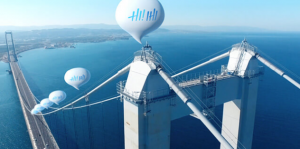Aero Engine and Space
[aero_link]
[breadcrumb_product]
Meteorological & Disaster Prevention Systems
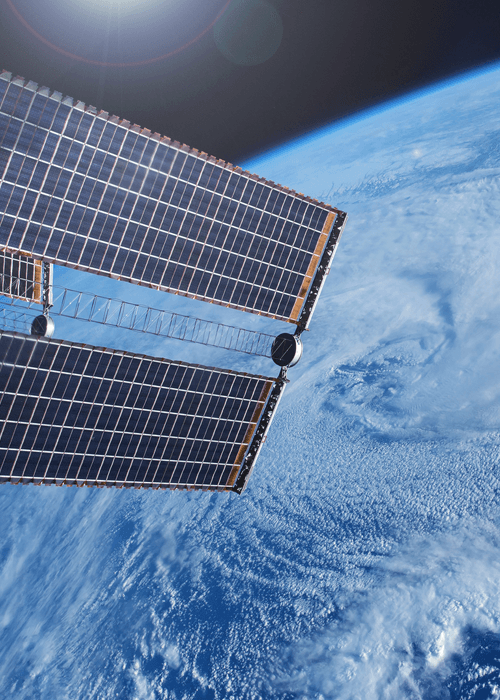
Weather changes have tremendous impacts on our daily lives. Meisei’s weather observation system accurately reports the change of weather. It contributes to the long-term weather forecasts for disaster prevention, agriculture and fishery purposes. Meisei’s technology allows observation of weather from the ground surface to 30,000 m above the ground. These measurements include environmental measurements of ozone,and carbon dioxide concentrations in addition to the general weather information of wind, precipitation, temperature and humidity. ‘Environment’ is a keyword for any business of today. Meisei’s products help to issue weather information customized and optimized to diversified objectives, depending upon the needs of customers.
Meisei’s ‘water management’ technology including telemeter (water level/rainfall) systems, water discharge warning systems, and others is used in dam control in the upper stream, in river control in the midstream and in water safety control in the downstream of rivers in populated areas, as well as in flood and disaster prevention control systems. Through this monitoring technology, people’s lives and property are protected.
Meisei’s technology plays an important role in maintaining the operational reliability of seismic monitoring systems that control information and data related to the pattern and peak acceleration of seismic waves, seismic intensity, magnitude, and epicentre information.
[space_tabs]
MEISEI Upper-air
MEISEI meteorology products & systems to cover surface to Upper-air observation. They play important roles in various fields; Meteorology, weather observation, environmental observation, etc. like AWS(AMeDAS in Japan)
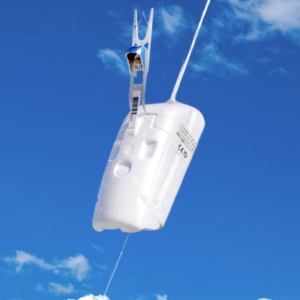
iMS-100 GPS Radiosonde
GPS radiosonde is an Upper-air sounding instrument to measure various types of meteorological data; wind speed, wind direction, pressure, temperature and humidity. Wind speed, wind direction and pressure are calculated from the travel speed and altitude obtained by GPS positioning techniques. Every 1 second measured data are transmitted to ground receiving system via 400-406 MHz band.
Compact and commonly-used devices are aggressively adopted in iMS-100 to achieve downsizing (just only 38 g including one battery) and its cost reduction. iMS-100 also serves for total operation cost saving by using smaller balloon and reducing the gas amount depending on the target height. Furthermore, the lightweight package greatly enhances safety in the sounding operation even without parachute when it accidently falls down on land, especially.
Improved sensor boom achieves higher accuracy in temperature measurement. Also, newly developed high response humidity sensor enables more accurate humidity measurement even in low temperature environment (below –40℃). In addition to the advantages of cost and safety, the innovative downsizing can minimize pendulum motions and heat contamination from the sonde itself during launch, which improves the measurement performances in terms of wind and temperature.
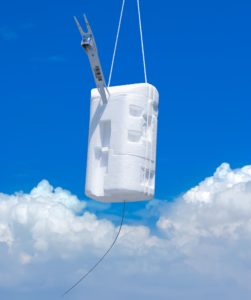
RS-11G GPS Radiosonde
GPS radiosonde is an Upper-air sounding instrument flying with weather balloon. As the balloon ascends, radiosonde measures variety of meteorological data; wind speed, wind direction, pressure, height, temperature and humidity. Wind speed, wind direction and pressure are calculated from the travel speed and altitude obtained by GPS information. Temperature and humidity data are obtained from dedicated thermistor and electrostatic capacitance humidity sensor, respectively. Measured data are transmitted to ground receiving system every second using 400-406 MHz band.
Redesigned sensor boom achieves higher accuracy in temperature measurement. Also, newly developed high response humidity sensor enables more accurate humidity measurement even in low temperature environment. RS-11G enables various kinds of soundings through expansive interfaces, such as MTR (16 Hz temperature sampling), CFH (Cryogenic Frostpoint Hygrometer), Radioactivity sonde, ECC Ozone sonde, Cloud Particles Sensor (CPS), etc.
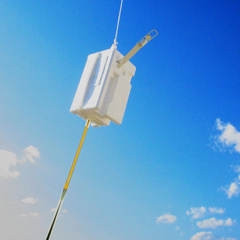
RS-06G GPS Radiosonde
GPS radiosonde is an Upper-air sounding instrument for measuring various types of meteorological data; wind speed, wind direction, pressure, temperature and humidity.
Wind speed, wind direction and pressure are calculated from the speed of travel and altitude obtained by GPS positioning techniques; and temperature and humidity data measured from respectively tuned thermistor and electrostatic capacitance humidity sensor.
1 sec sampled GPS data and 1 or 0.5 sampled temperature / humidity data are transmitted over PCM via a TDM network. The transmitted data is automatically processed through a data processor at the surface station.
The installed PLL oscillator employs narrow FM and conforms to ETSI.
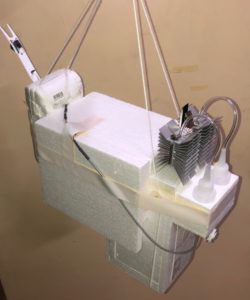
SKYDEW Chilled-mirror hygrometer
SKYDEW is Peltier-based chilled-mirror hygrometer which accurately measures the amount of atmospheric water vapor based on the thermodynamic measurement principle. It can provide accurate water vapor; the size and density of frost/dew in the troposphere and even stratosphere without contaminating atmospheric condition by CHF3. Since refrigerant is no longer used, SKYDEW has a low environmental impact and is easy to handle.

CPS sonde
(Cloud Particle Sensor)
CPS (Cloud Particle Sensor), combined with GPS radiosonde, provides in-situ cloud measurements including vertical distribution of cloud particles (number density, size, and the phase (water cloud-ice clouds)/shape) in addition to the fundamental meteorological elements (Temperature, Humidity, Height and Wind direction/velocity).
CPS collects ambient air samples through its duct during radiosonde’s ascent and measures floating particles with light scattering method by using one linearly polarized light source and two photodiode detectors. One detector directly measures the scattered light from the particle, and the other detects the polarization components of the scattered light.
CPS sonde is compatible with MEISEI standard GPS sonde ground system (RD-08AC) and software (MGPS-R). Output data include the number of counts per second, scattered light intensity and degree of polarization, which provide us with number density, particle size and the phase (water cloud-ice clouds)/shape of cloud particles.
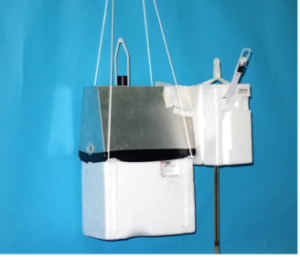
HYVIS : HYdrometeor VideoSonde
Balloon borne HYVIS is in-situ measuring instrument to capture Upper-air cloud and/or ice crystal particles. HIVIS, connected with a GPS radiosonde, takes in ambient particles with sizes ranging from a few dozen μm to hundreds μm during ascension. Collected particles are attached to transparent film and then particle images are captured using two different cameras (microscope and close-up) alternately.
The captured video signals (images) are transmitted to ground HYVIS receiver system using 1680 MHz*1 radio telemetry. Antennas of the receiver system are controlled by GPS positioning information obtained from GPS radiosonde and hence automatically chase the flying HYVIS, which facilitates easy flight operation and minimizes tracking failure. The video images captured provide cloud property (shape, size, and number concentration) of sampling particles with vertical profile.
HYVIS has been using for in-situ cloud observations (microphysical properties in cloud), validation for classification of cloud particles by polarimetric radar, and numerical model simulation.
*1) Applicable Radio Laws/Regulations should be complied with.

Radioactivity sonde
Radioactivity Sonde consists of radioactivity sensor and GPS radiosonde, which enables to measure the vertical profile of both β and γ radiations together with temperature, humidity, height, wind speed and wind direction. The intensity of β and γ radiations are detected during radiosonde’s ascent and transmitted to the ground receiver system as a pulse count value per one second.
Two types of Geiger Muller tube (GM tube) are installed. One detects γ ray and the other is for β and γ rays. Measured pulse count values can be converted to other units (e.g., mR/h) assuming source of radiation is Cs-137.
Ground receiver RD-08AC and sounding software MGPS-R supports Radioactivity sonde operation.
Additionally, γ radiation spectrum can be measured by connecting Spectrum meter (option) with 512 channels per one minute.
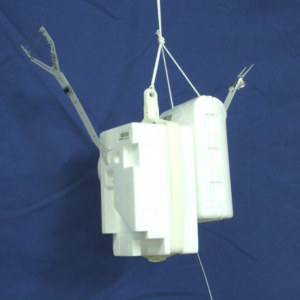
MTR-08 Temperature Reference Sensor for Upper-air
Temperature reference sensor(MTR-08) is sonde with a fine tungsten wire (10 um diameter) for temperature measurement.
The response is 5/1000sec on surface and 40/1000sec at around 30km altitude. The response is 40times faster than conventional radiosonde.
The fine wire has the aluminum coating and the heating by solar radiation at 30km altitude is less than 0.5k. A reliable temperature data can be acquired.
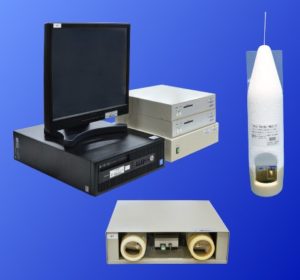
MDSS : Dropsonde Receiving System
This system is an Upper-air meteorological observation instrument which measures a vertical profile of Upper-air atmosphere using a dropsonde. Dropsonde will be dropped from the aircraft and will transmit temperature, humidity, atmospheric pressure and GPS information on the carrier wave of the 400 MHz meteorological band. This system is installed in the aircraft, receives and demodulates this carrier wave, and visually displays transmission data.
MEISEI’s dropsonde (iMDS-17) is lighter than the previous dropsonde that measurement can be performed without parachute. This dropsonde also can be dropped from the shooter on the air craft since a parachute is no longer needed.
As of 2017, in Japan, Gulfstream-II(G-Ⅱ) operated by Diamond Air Service (DAS) is equipped with the drop sonde receiving system and is contributing to typhoon observation.
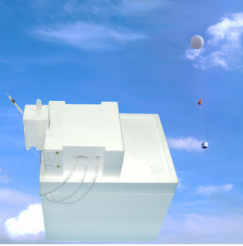
MCD-10 CO2 Sonde
The world-first balloon-born CO2 sonde, the combination with GPS radiosonde and small NDIR type CO2 sensor, was developed to measure the vertical profile of CO2. CO2 sonde can be operated with conventional weather balloon regardless of the observation site (e.g., isolated areas or remote islands), weather condition and time (day/night).
CO2 concentration is measured in the troposphere (0—10 km) with about 300 m vertical resolution. Adoption of NDIR senor facilitates easy preparation for preflight and operation. Furthermore, the embedded two reference gases achieve high measurement accuracy of less than 1ppm.
CO2 sonde has been utilized for 1) Validation with other observation method such as aircraft, tower or satellite (GOSAT etc.), 2) Evaluation of CO2 absorption/emission in the forest, or 3) Long-term CO2monitoring for climate change prediction and global warming prevention activity, etc.
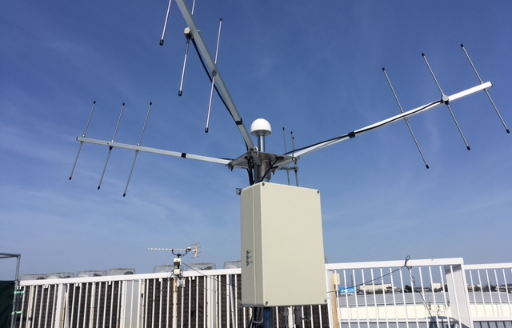
GPS Radiosonde Ground Receiver System RD-18
RD-18 receiver is mounted on antenna pole. RD-18 receives signal of the radiosonde, demodulates the signal, sends measured data to indoor PC by an Ethernet cable. RD-18 consumes less power and it is powered from PoE injector by an Ethernet cable. By selecting the PoE injector compatible with each country’s power supply, it can be used in any power supply environment. RD-18 has backup capacitor inside, so it keeps working against momentary power failure. RD-18 also sends HK data (lock status, inside temperature and the status of power supply) to PC. RD-18 has other basic functions, such as antenna switcher, narrow 8ch band pass filter, AFC/MFC and real time spectrum measurement.
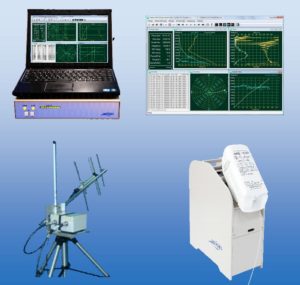
RD-08AC GPS Sounding System
GPS Radiosonde Sounding System RD-08, Full code correlating GPS radiosonde ground station ensures capturing reliable and accurate Upper-air weather.
This lightweight and compact sounding system is intended for increased portability and conveniences in sounding. Your sounding experiences will be extended more than ever.
The corresponding GPS radiosonde, RS-11G carries a temperature sensor and humidity sensor. Pressure is calculated from the GPS altitude measured by single point positioning. Sounding duration lasts 180 minutes, allowing vast stretches of sounding possibilities. Abundant choices of interfaces expand the use of supplemental sensors.
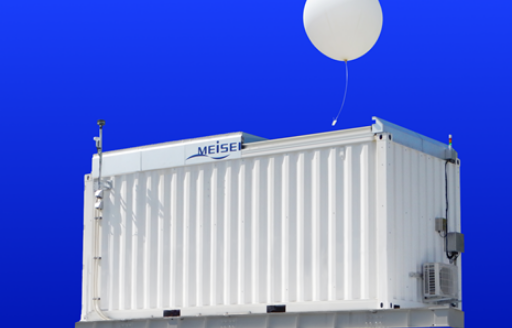
Automated Radiosonde system (ARS)
Canister type ARS automatically launches radiosondes iMS100 and acquires Upper-air sounding data. ARS can release operators from mid-night-early morning sounding, dangerous H2 gas inflating works, frequent trouble shooting, balloon launching in windy condition, and limited loading number of radiosonde and balloon. Canister type ARS allows to adjust the number of Radiosonde & balloon to be loaded. 4 to 40pcs of iMS100 & balloon can be set to the Canister module. ARS is remotely monitored and controlled.
Surface
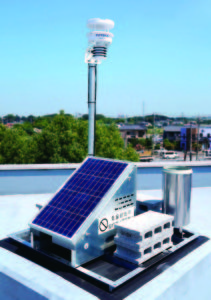
Advanced observation system POTEKA
POTEKA is a compact weather sensor system. POTEKA is a community based observation system that aims to provide information on countermeasures appropriate for the weather conditions on the spot with real-time analysis and information distribution by collecting pinpoint weather information in a small area. POTEKA is applicable to various fields, including disaster prevention, health measures such as for heatstroke and influenza, teaching material at schools, safety of children at schools, agriculture, medical care, energy, and comfortable living environment.
Seismometer
MEISEI disaster prevention, mitigation products & systems to protect people’s lives from all kinds of natural disasters. MEISEI provides disaster prevention systems that combine the know-how and reliable measurement technology, data processing and communication systems that we have developed as a pioneer in weather observation.
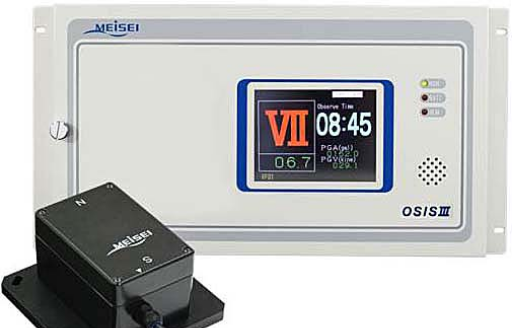
Seismometer G210DM
G210DM is a high-performance seismometer for government agencies and research institutions. It has been used by dams, the Japan Meteorological Agency, the World Meteorological Bureau, and the Earthquake and Volcanic Bureau.
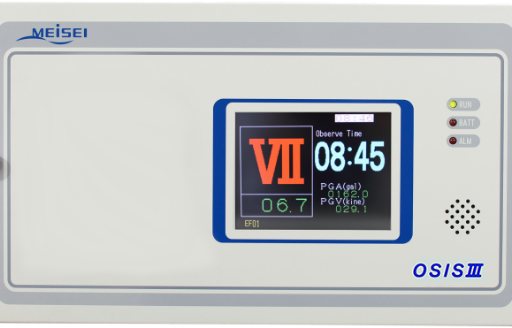
Seismometer G210RW
G210RW is a high-performance seismometer for government agencies and research institutions.
It has been used by the Japan Meteorological Agency, the World Meteorological Bureau, and the Earthquake and Volcanic Bureau.
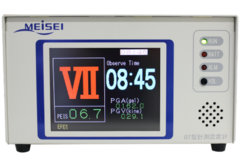
Seismometer S200
S200 can calculate and indicate seismic intensity by PEIS of Philippines*.
And S200 will be able to calculate several seismic intensity methods of other countries.
PEIS : PHIVOLCS Earthquake Intensity Scale
*PHIVOLCS : Philippine Institute of Volcanology and Seismology
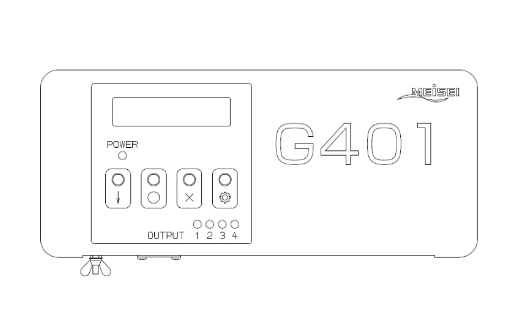
Seismic intensity meter G401
G401 calculates seismic intensity by adapting Modified Mercalli seismic intensity calculation method.
G401 enables control systems such as factory machine, gas valve, automatic door etc. using contact outputs by seismic intensity or acceleration value.
And G401 is connectable with PC web browser, therefore this intensity meter can be tested and controlled by remote.
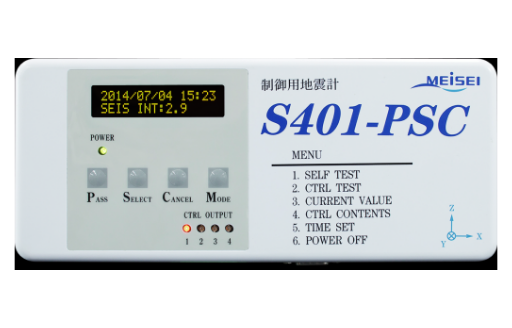
External System Control Seismometer S401-PSC
S401 is popular edition of S200.
S401 will also be able to calculate several seismic intensity methods of other countries like S200.
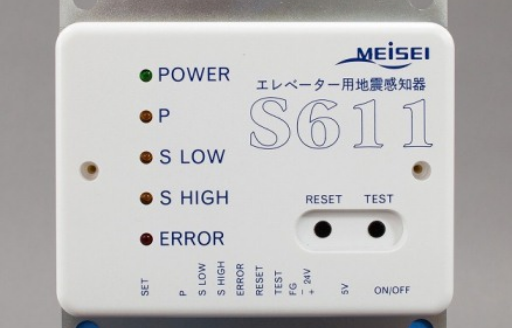
Seismic Detector for Elevators S611
S611 is a specialized seismic detector for elevator controls.
S611 can detect 3 kinds of the earthquake waves (Primary wave, low-Secondary wave, high-Secondary wave), and output contact-control to elevators.
Accessories
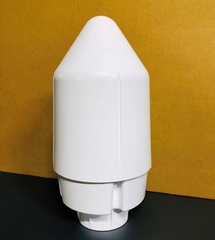
S210-TR
S210-TR has a built-in patch antenna with a ground plane. The structure is less susceptible to multipath. The installation location can be selected flexibly.
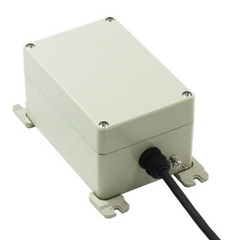
Junction Box
Junction box is for G250S-S strong motion seismometer. It is used for connection between sensor cables. Waterproof design, it can be installed outdoors and with built-in arrestor, protects the sensor from lightening surges.
Digitizer

Multi Channel Digitizer G1019
MULTI CHANNEL INPUT/OUTPUT
G1019 has 4ch analog input, 1ch serial input / output, 4ch contact input / output interface, and saves these Inputted data to CF card and micro SD card.
CHANNEL EXTENSION FUNCTION
Addable per 4ch with extension channel unit. (max. 20ch / 4 extension units)
LOW POWER CONSUMPTION
Need only 3W at full time mode. And make more low power consumption is realized by selectable operation modes.
SELF PROTECTION
Protect by automatic shutdown with low voltage detect function, and connection check function.
USING EVERYWHERE
IP67 dust / water proof casing makes everywhere observing.
Hydrology
MEISEI hydrology products & systems to make effective utilization of precious water resources and also contribute to disaster prevention. The hydrology products & systems covers the whole area from the upper reaches of rivers flowing through mountainous areas to the lower reaches of rivers.
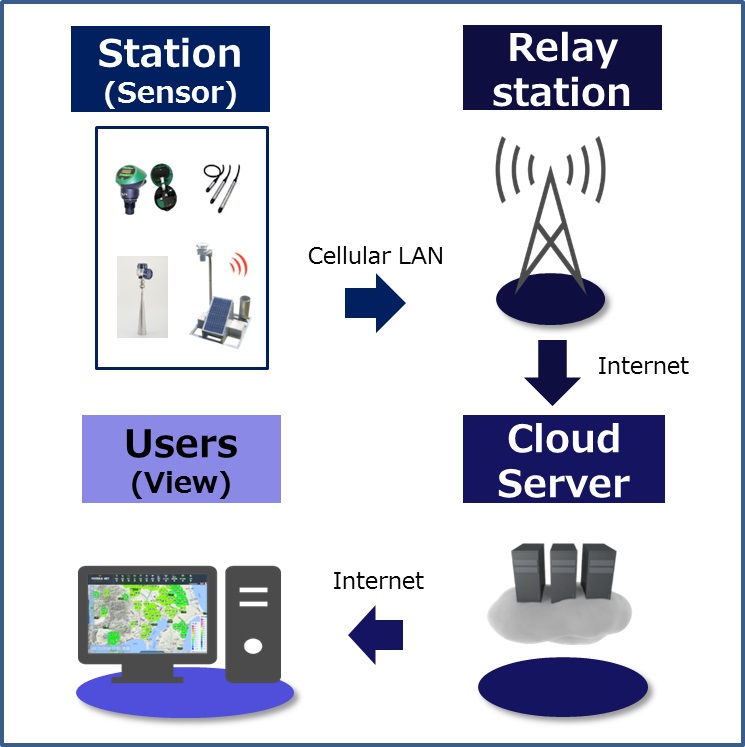
3L Water Level Gauge
Meisei 3L water level gauge is specialized for observation during floods.
3L means the following and realizes it.
- Low cost
No electrical construction and communication work → Construction cost reduction - Long life
Maintenance free for 5 years (*Equipment must be cleaned regularly.) - Localize
Water level can be monitored and measured by the local river management organization independently.
Traffic control
MEISEI aviation products to support safety sky traffic with the communication control equipment under accumulated-technology, which is essential for safe airplane flight.
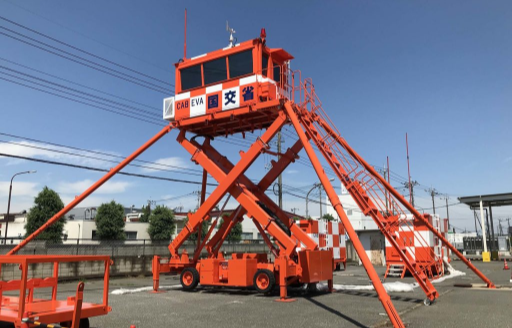
Compact Tower
CVA(Compact VFR system for ATC) performs as back up control tower in emergency cases; CVA can quickly recover communication capabilities damaged by natural disaster like Tsunami, flood, unexpected situation like power failure, fire, terrorism, etc.
CVA also performs as economical compact control tower. CVA is suitable for the local airport, where ground to air communication, weather observation instruments is not available.
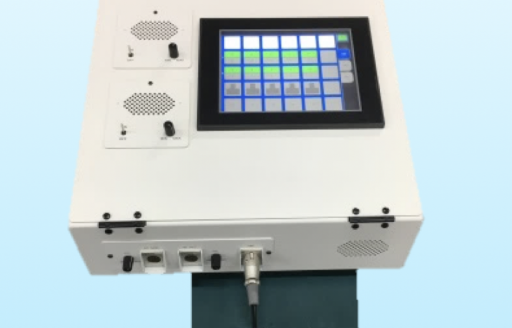
SAC-20 transportable VCCS
SAC-20 comprises communication desks; a Radio communication console, a dedicated telephone console, and a switch box for internal-external telephone line, radio communication and system control. The communication desk has the touch panel display which is customizable by user requirements. The radio communication console can be increased up to 2 consoles. The carriable SAC-20 can be easily moved and deployed with its storage case.
Satellite Components
The Space extended boundlessly. For the mysterious elucidation. The technology of MEISEI continues flying in the Space today.
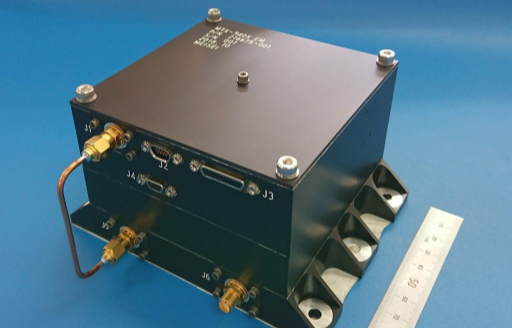
High-Speed X Band Transmitter MTX-540X
64APSK technology achieves the world’s highest class frequency efficiency for the earth observation downlink. MTX-540X enables your satellites to maximum 538 Mbps downlink.
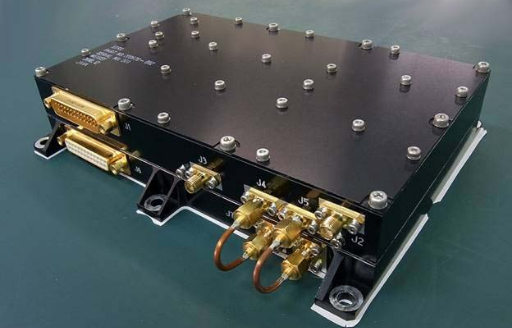
1Mbps S-band Transceiver for Satellite
It will be installed on the small satellite and perform the command reception from the ground, and the telemetry transmission to the ground using 2GHz wave band.

CubeSat OBC for Satellite
General purpose onboard computer for CubeSat

Monitor Camera for Satellite
The monitor camera is a unit consisting of a floodlight (left), a camera (right) and a camera controller to take pictures of deployments of satellite-mounted solar battery paddles and antennas.
Heritage
– 3 units for world’s fastest communication satellite “KIZUNA” (WINDS)
– 8 units for greenhouse gas observation technology satellite “IBUKI” (GOSAT)
– 3 units for Quasi-Zenith Satellite “MICHIBIKI” (QZSS)
– 6 units for Global Change Observation Mission 1st-Water SHIZUKU” (GCOM-W1)
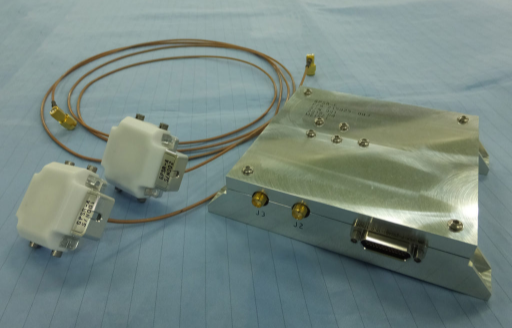
Dual Antenna GPS Receiver for Satellite
Dual GPS antenna enables positioning at any attitude.
- GPS and QZSS receiver for micro and small satellites
- Inner combination of signals from two antennas
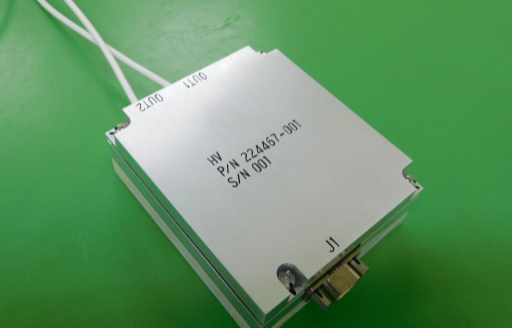
High Voltage Power Supply for Satellite
This instrument is a HVPS (high voltage power supply) to be installed on scientific satellite for supplying voltage to detectors in the space environment.
It can be output up to 0 to +5000 V/ -5000 to 0V with reference voltage (analog or digital)
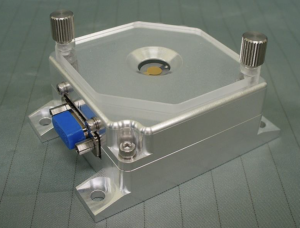
Quartz Crystal Microbalance (QCM) for Satellite
Quartz Crystal Microbalance (QCM) is a unit for monitoring contamination status around satellites by utilizing the characteristics of oscillating frequencies variation depending on the amount of substances attached over the crystal surface.

Particle Detector for Satellite
A particle detector instrument observes electron, proton and He. The instrument contributes to investigations into the cause of troubles such as malfunctions of semiconductor devices and electrostatic charge. It also observes the worst environment of trapped particles in the radiation belt, solar flare particles, and auroral particles.
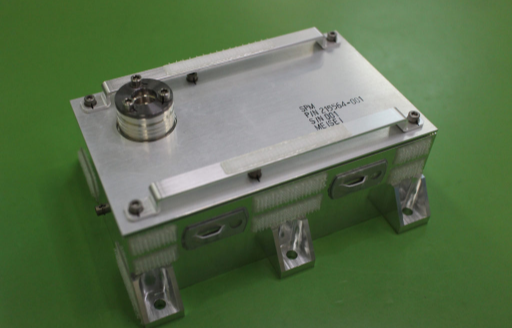
Space Particle Monitor (SPM) for Satellite
*SPM identify the effect of the space radiation environment(TID, SEE etc.*) in the satellite orbit.
SPM can count space radiation, and it is used for a small satellite with an altitude of 400 to 500 km.
*Customization is available
**Estimate only. SPM count the number of the energy particle(Electron, Proton, Heavy ion)

Earth Sensor for Satellite
4 pieces of multi-pixel array of thermopile sensors detect Earth edge to calculate the roll angle and the pitch angle. Its compact design is suitable for Micro-Satellites.
The Earth Sensor is a device for determining the attitude of a micro satellite at an altitude of about 500 km
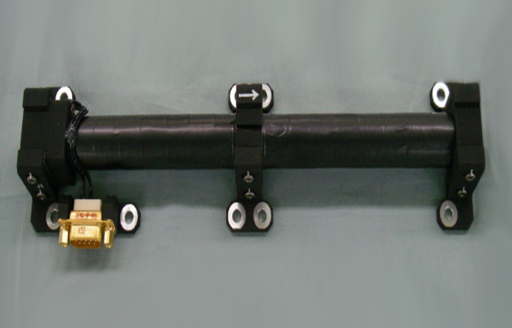
Magnetic Torquer for Small Satellite
The magnetic torque actuator is an equipment to control spacecraft attitude due to the effects of the geomagnetic field.
Meisei electric provides every size of magnetic torquers: for pico, nano, micro, small satellites and CubeSats. Meisei’s magnetic torquers are designed in our original technique and have a good balance of power consumption and mass.
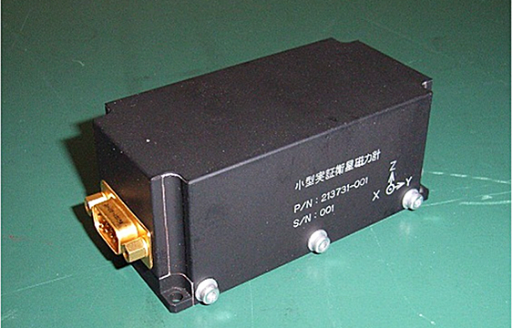
3-Axis Magnetometer for Small Satellite
3-axis fluxgate magnetometer for attitude measurement
Contracted Test Service
Services to develop a variety of observation instruments, and to provide the testing for evaluation of the earthquake resistance and environmental resistance in space under the technologies we have accumulated in various fields.
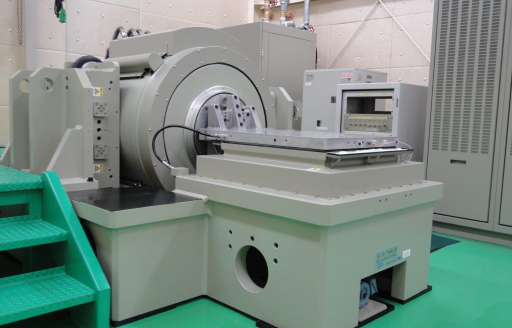
Vibration Testing System
The vibration testing system simulates the vibrations rockets and satellites will have to withstand when they are launched.
Meisei provides testing services in its test facilities where assessment is conducted of vibration resistance, environmental resistance during launch and thermal design, performance, etc. in space for satellite and rocket components.
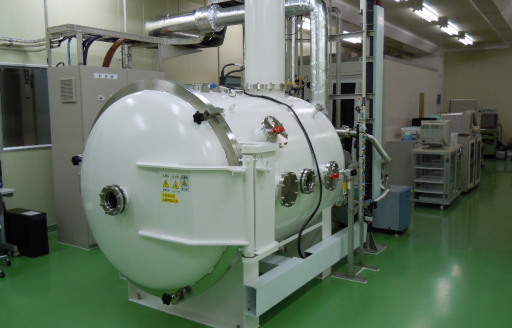
Small Space Chamber
The small space chamber simulates the conditions (high vacuum, cold, darkness) to which devices installed in satellites will be exposed, in order to evaluate, amongst others, their environmental tolerance, thermal design and performance on the ground.
Meisei provides testing services in its test facilities where assessment is conducted of vibration resistance, environmental resistance during launch and thermal design, performance, etc. in space for satellite and rocket components.
[space_tabs]





